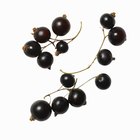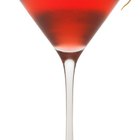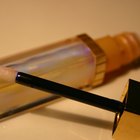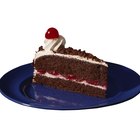
When you're making a mixed drink or specialty coffee, the last thing you want is to have it curdle. So if you are using a cream liqueur as one of the ingredients, you need to know what you can mix with it safely — and what will leave you with a semi-solid disaster. Unless you're making a Cement Mixer — a novelty shot of Irish cream liqueur and citrus juice — you'll want to avoid curdling.
Avoid Most Carbonated Mixers
To avoid a curdled drink, avoid mixing a cream liqueur with anything containing citric acid. Most sodas, such as ginger ale and tonic water, contain citric acid. Other citric acid sources include vermouth or sparkling wines such as champagne. However, there are a few soft drinks with lower amounts of citric acid, such as root beer.
Avoid Acidic Fruits and Fruit Juices
Tart fruits and their juices are naturally acidic, too. Lemon, lime and grapefruit juice should never be mixed with a cream liqueur, due to their high citric acid content. Cream liqueur can be made with orange, however, because the flavoring comes from the peel and not the juice of the orange; also, oranges are less acidic than lemons and limes. Most berries, with the exception of blueberries, pineapple and cherries are also acidic as are their juices.
Things You Can Mix With Cream Liqueur
Rum, whiskey, brandy and other hard liquors are excellent bases for mixed drinks using cream liqueurs. Fruits and fruit juices that have a low acid content, such as bananas, peaches or coconut, also combine well with cream liqueur.
Root beer is the best choice for a carbonated mixer with cream liqueur; the cocktail called a Corbob is a mix of root beer with Irish cream liqueur.
Coffee is another good choice for a cream liqueur drink; the two are commonly blended to make dessert drinks. An Iced Latte, for example, is made with Irish cream liqueur, coffee, hot chocolate mix, sugar and whipped cream. Cream liqueurs may also be poured over ice cream to make a simple-yet-tasty dessert.
Additional Tips
Store your cream liqueurs in a dark, cool place like the refrigerator; you may also keep it in a cupboard. Check the liqueur before using it. If you have had it around for awhile, you will ideally want to drink it within about 6 months of purchasing it. Cap the bottle tightly, since exposure to the air will change the color and texture of the cream liqueur.
Related Articles

Can You Use Creme De Cassis As a ...

Why Does Some Alcohol Curdle Cream?

What Makes Cream Liqueur Curdle in ...

Can I Make Sangria From White Zinfandel?

Substitute for Framboise Liqueur

Good Chasers to Mix With Vanilla Vodka

What Is a Good Mixed Drink Using ...

Substitutes For Tequila

Chocolate Martini: How Many Calories?

Triple Sec & Vodka Drinks

The Difference Between Brown and White ...

How to Make a White Russian Without ...

Does Cream-Based Frosting Have to Be ...

Make It a Manhattan: Classic Manhattan ...
Cream vs. Creamer

List of the Different Kinds of Mixed ...
List of Popular After Dinner Drinks

The Difference Between Half-and-Half ...

How to Make Shiny Lip Gloss

What Is a Substitute for Cherry Liqueur?
References
- 365 Cocktails: Mixers, Shakers, Shots: The Complete Bartender's Guide; Brian Lucas; p. 87
- The Ultimate Bar Book: The Comprehensive Guide to Over 1,000 Cocktails; Mittie Hellmich; n.p.
- Thekitchn.com: Food Science: Why Lemon Makes Milk Curdle
- Kindred Cocktails: Craft Cocktail Making: Theory and Structure of Acidity
- Chiark.greenend.org: Citric Acid In Foods
- Webtender.com Forums: Subjext: Re: Curdling?
- Barnonedrinks.com: Drinks By Ingredient: Cream
Resources
Writer Bio
Laura Crawley has been writing professionally since 1991. She has written about urban history for "The Hillhurst-Sunnyside Voice." She has also written about New York City history at the Virtual Dime Museum website and about popular culture at Kitchen Retro. Crawley holds a Bachelor of Arts in English from Swarthmore College and a Master of Arts in English from the University of Toronto.
Photo Credits
Eising/Photodisc/Getty Images